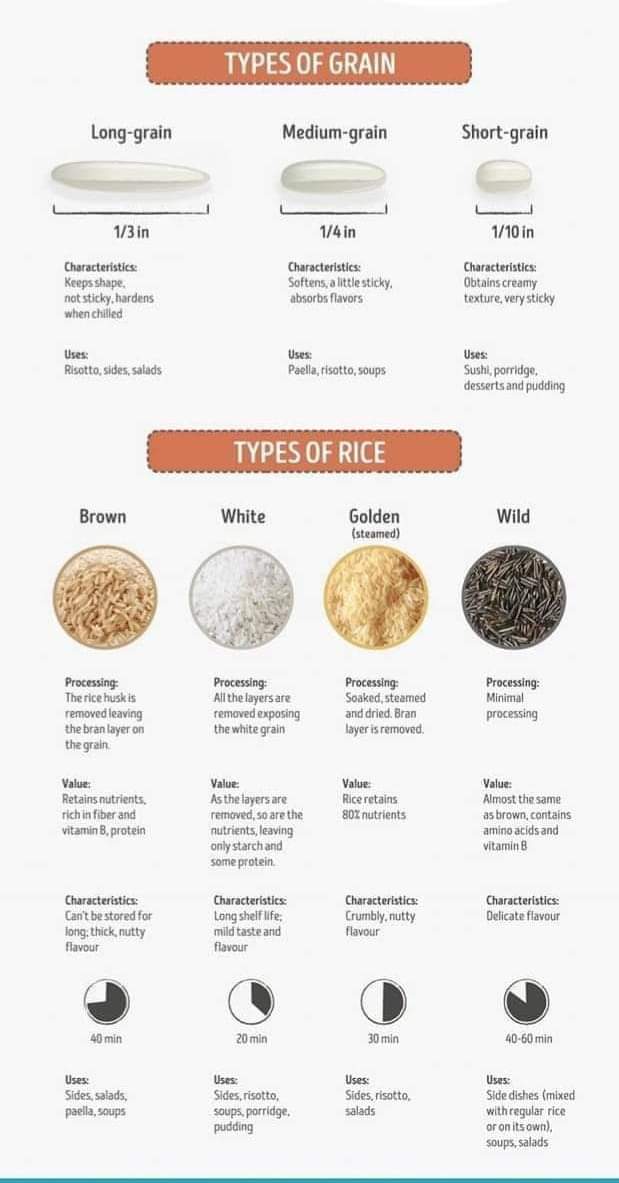
Rice is one of the most popular foods on the planet, and for good reason. It’s inexpensive, easy to cook with minimal effort, and pairs well with just about any flavor profile. Rice comes in many different varieties, each of which has its own special properties: long-grain rice makes fluffy dishes like fried rice; medium-grain rice has a sticky texture that works well in risotto; short-grain rice has a creamier consistency that’s great in risotto as well; brown rice retains all its nutrients while white rice loses most of them during processing (and can even have chemicals added).
Long-grain rice
Long-grain rice is the most popular variety in the world, and it’s used to make many different types of dishes. The long grains of this type of rice give you fluffy, light results that have a nutty flavor. Long-grain rices are best for fluffy dishes like fried rice or paella; they also work well when you want to serve your meal with a side dish that will complement its flavor profile (like an Indian curry). Long-grain rice is best for fluffy rice dishes like fried rice.
Medium-grain rice
Medium-grain rice is plumper, with a stickier texture when cooked. It’s also known as sushi rice because it’s used to make the famous Japanese dish. Medium-grain rice is shorter than long-grain varieties, but they’re sturdier and have more inner bran layers (which makes them more nutritious). Their shorter size means they have a higher starch content–which contributes to their stickiness when cooked–and their extra bran gives medium-grain varieties more flavor and aroma.
Short-grain rice
Short-grain rice is the best choice for risotto because it has a creamy consistency. This makes it easier to stir in the hot liquid, which helps you get that nice, rich texture. If you’re making risotto and want to achieve that perfect consistency, short-grain rice will give you more control over what’s going on in your pot!
Brown Rice
Brown rice is more nutritious than white rice. It has more fiber, vitamins and minerals, protein, and a nuttier flavor that makes it more filling. In addition to being healthier than white rice (which has had the bran removed), brown rice also takes longer to cook because of its higher fiber content–so if you’re looking for an easy weeknight side dish or breakfast idea that will fill you up without weighing down your stomach later on in the day then go with this grain!
White rice
White rice is a whole grain that’s been processed with chemicals to remove the bran and germ from the grains, which provides it with a longer shelf life than brown rice but also removes many of its nutrients. Brown rice retains its natural outer layer, which contains fiber and many other important vitamins and minerals. To make matters worse, white rice often gets enriched with nutrients after processing (this helps restore what was lost). However, enrichment does not replace all those lost vitamins or minerals–it only adds back some of them. In fact, one study found that enriched white rice contained only about half as much magnesium as unrefined brown basmati or jasmine rices!
If you’re looking for a healthier alternative to white rice, brown rice is the way to go. It’s full of fiber and nutrients like magnesium and iron. You can also try out our guide on quinoa which is another grain that has a lot of health benefits!
